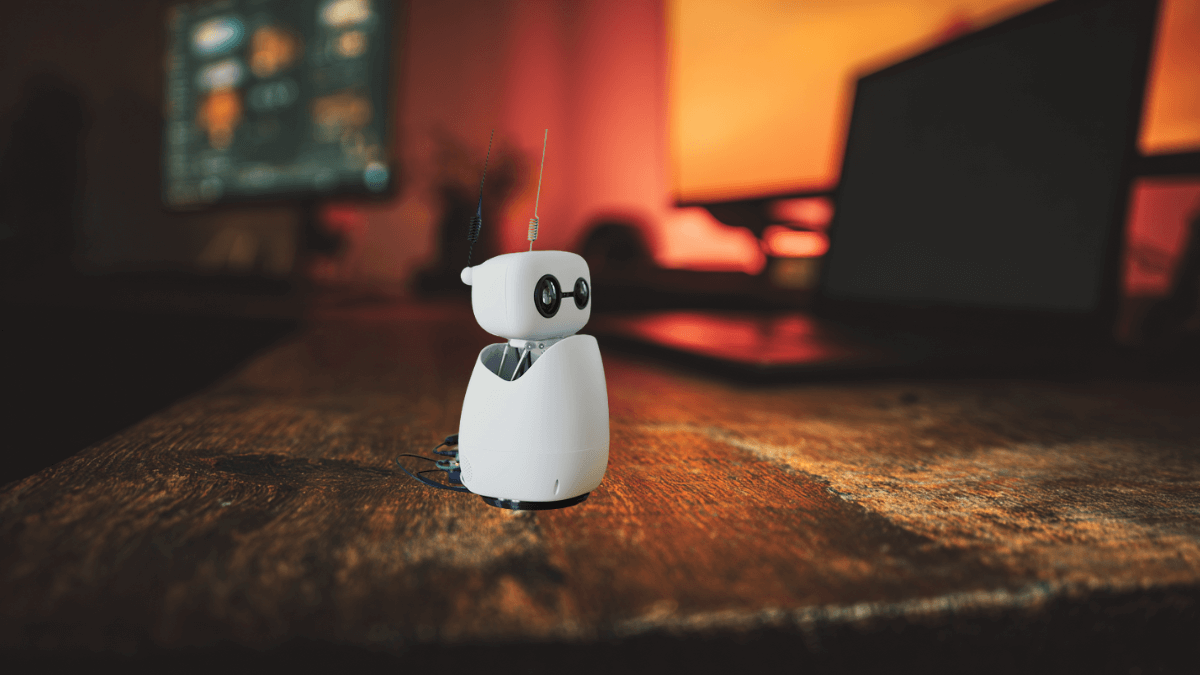Hugging Face's $299 Robot Takes on China's Robotics Revolution
The democratization of robotics just hit a price point that changes everything.

Hugging Face, the company that made AI models as accessible as downloading an app, just dropped their first robot: Reachy Mini. At $299, it's not just affordable it's impulse-buy territory for anyone serious about AI development.
Thomas Wolf, Hugging Face's co-founder, perfectly captured the moment:
Thrilled to finally share what we've been working on for months at @huggingface 🤝@pollenrobotics
— Thomas Wolf (@Thom_Wolf) July 9, 2025
Our first robot: Reachy Mini
A dream come true: cute and low priced, hackable yet easy to use, powered by open-source and the infinite community.
Tiny price, small size, huge… pic.twitter.com/yl71EtwTKs
Reachy Mini stands 11 inches tall, weighs 3.3 pounds, and comes as a kit you assemble yourself. The base model connects to your Mac or Linux machine (Windows coming soon), while the $449 wireless version includes a Raspberry Pi 5, WiFi, and battery. Both versions feature a camera, microphones, speakers, motorized head movement, and those charming animated antennas that make human-robot interaction actually feel natural.
But here's what makes this significant: Hugging Face is treating robots like they treated AI models. Plug-and-play behaviors available on launch, easy uploading and sharing of new robot programs, and a Python SDK that makes programming feel intuitive rather than intimidating. They're even building simulation tools so you can develop and test robot behaviors before the hardware arrives.
This launch comes at a moment when robotics is exploding into the mainstream in ways that would have seemed like science fiction just two years ago. While Hugging Face focuses on making robotics accessible to developers and educators, companies like China's Unitree are pushing the boundaries of what's commercially possible.
In #China's children are playing with Unitree’s new humanoid robot, now on public sale and seen across the country.#ChinaSuarez
— Gyanendra (@whogyanendra_) July 9, 2025
pic.twitter.com/FZUtan7Sbi
The numbers tell the story of how quickly this market is moving. Unitree sold 23,700 robot dogs with a 70% global market share last year, while Boston Dynamics sold only 2,000 units. The price difference explains everything: Unitree's Go2 robot dog costs only about 10,000 yuan (US$1,376) while Boston Dynamics' Spot is 50 times more expensive at $75,000.
Unitree's success isn't just about price, it's about accessibility. Their robot dogs come with open SDKs that let developers train custom behaviors, teach new tricks, and share programs with the community. While Boston Dynamics focused on enterprise applications with locked-down systems, Unitree made their robots hackable platforms that anyone could experiment with. This democratized approach to robotics development laid the groundwork for what Hugging Face is now doing with humanoid robots.
But it's not just about cheaper hardware. China's humanoid robot manufacturers are charging full steam ahead to mass production, which a new report said would boost the total value of automata made on the mainland this year to about 4.5 billion yuan (US$616 million). Six major Chinese robotics companies plan to manufacture over a thousand humanoid robots each this year.
The applications are expanding rapidly. China's startups are harnessing AI to prepare robots for increasingly complex roles. These aren't just dancing novelties they're being tested for garbage sorting, medicine delivery in nursing homes, street patrols with police, museum tours, and yes, military applications.
What we're witnessing is the convergence of several technological trends: AI models that can process visual and audio input in real-time, manufacturing costs that have plummeted due to scale, and development platforms that make robotics programming accessible to software developers rather than requiring specialized robotics expertise.
Hugging Face's approach is particularly clever. Instead of trying to build the most advanced robot, they're building the most accessible robot development platform. The same strategy that made them the GitHub of AI models could make them the foundation of consumer robotics development.
The open-source nature of Reachy Mini means the community will drive innovation. Instead of waiting for a company to decide what behaviors your robot should have, developers can build, share, and iterate on robot capabilities in real-time. It's the difference between buying a locked-down appliance and getting a programmable platform.
This matters because robotics has always suffered from the chicken-and-egg problem: robots were too expensive and difficult to program for mainstream adoption, so there wasn't enough demand to drive down costs and improve tools. But now you can get started with serious robotics development for the price of a mid-range laptop.
The timing couldn't be better. While China races ahead with industrial and military robotics applications, the West has an opportunity to lead in democratized, open-source robotics development. Hugging Face is betting that the same community-driven approach that revolutionized AI will work for robots.
And they're probably right. When the barrier to entry drops from $75,000 to $299, the number of people who can afford to experiment increases by orders of magnitude. When those experimenters can share their work instantly with a global community, innovation compounds exponentially.
The robot revolution isn't coming it's here. The question isn't whether robots will become part of daily life, but whether that future will be built by closed ecosystems charging premium prices, or open communities making the technology accessible to everyone.
Hugging Face just cast their vote for the latter. At $299, they're not just selling a robot they're democratizing an entire field of technology that could reshape how we work, learn, and live.








